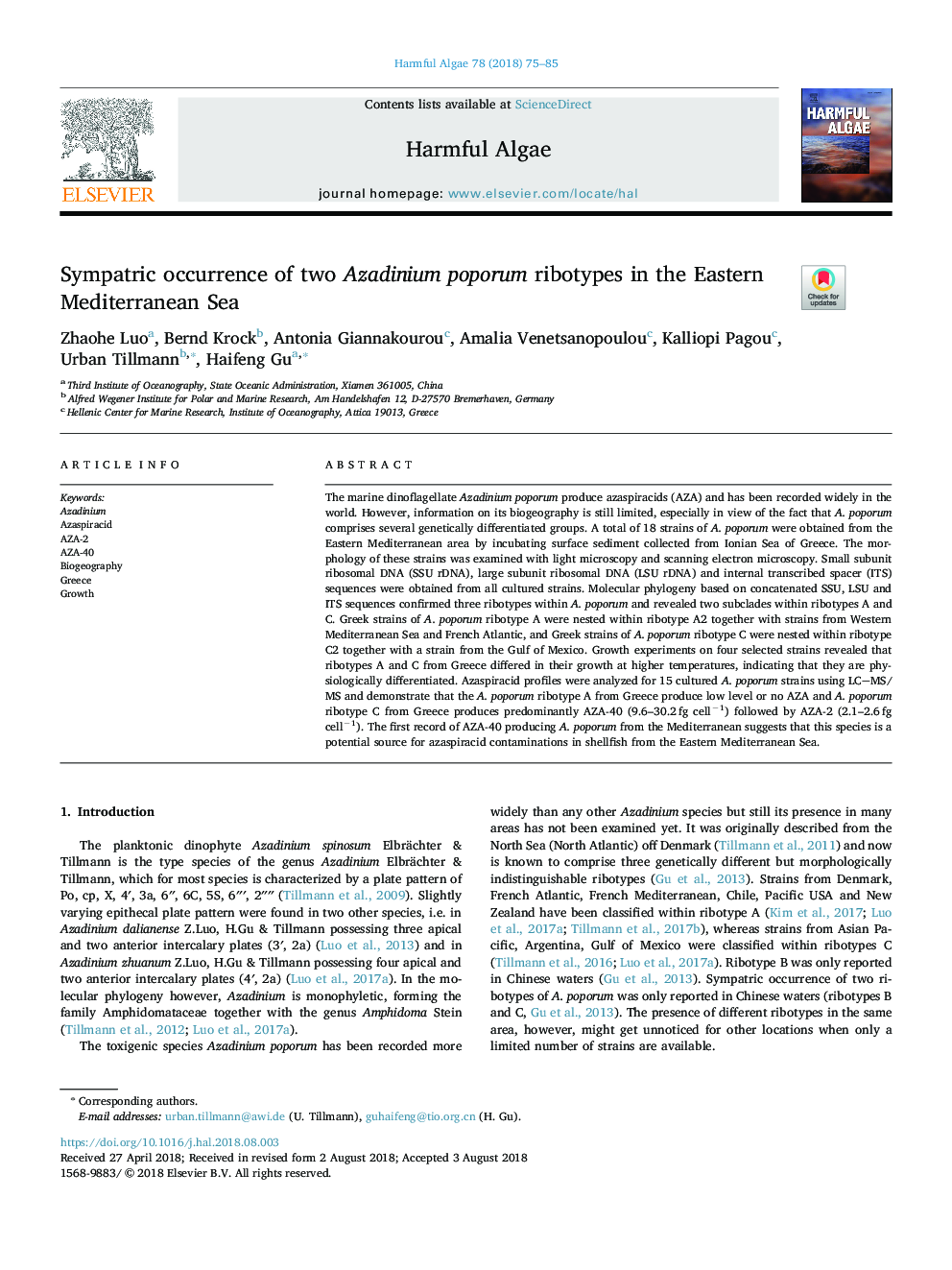| کد مقاله | کد نشریه | سال انتشار | مقاله انگلیسی | نسخه تمام متن |
|---|---|---|---|---|
| 8885624 | 1626894 | 2018 | 11 صفحه PDF | دانلود رایگان |
عنوان انگلیسی مقاله ISI
Sympatric occurrence of two Azadinium poporum ribotypes in the Eastern Mediterranean Sea
ترجمه فارسی عنوان
سم پاتریس دو گونه ردووتیپ آزاتینیم پاپوروم در دریای مدیترانه شرقی
دانلود مقاله + سفارش ترجمه
دانلود مقاله ISI انگلیسی
رایگان برای ایرانیان
کلمات کلیدی
موضوعات مرتبط
علوم زیستی و بیوفناوری
علوم کشاورزی و بیولوژیک
علوم آبزیان
چکیده انگلیسی
The marine dinoflagellate Azadinium poporum produce azaspiracids (AZA) and has been recorded widely in the world. However, information on its biogeography is still limited, especially in view of the fact that A. poporum comprises several genetically differentiated groups. A total of 18 strains of A. poporum were obtained from the Eastern Mediterranean area by incubating surface sediment collected from Ionian Sea of Greece. The morphology of these strains was examined with light microscopy and scanning electron microscopy. Small subunit ribosomal DNA (SSU rDNA), large subunit ribosomal DNA (LSU rDNA) and internal transcribed spacer (ITS) sequences were obtained from all cultured strains. Molecular phylogeny based on concatenated SSU, LSU and ITS sequences confirmed three ribotypes within A. poporum and revealed two subclades within ribotypes A and C. Greek strains of A. poporum ribotype A were nested within ribotype A2 together with strains from Western Mediterranean Sea and French Atlantic, and Greek strains of A. poporum ribotype C were nested within ribotype C2 together with a strain from the Gulf of Mexico. Growth experiments on four selected strains revealed that ribotypes A and C from Greece differed in their growth at higher temperatures, indicating that they are physiologically differentiated. Azaspiracid profiles were analyzed for 15 cultured A. poporum strains using LCMS/MS and demonstrate that the A. poporum ribotype A from Greece produce low level or no AZA and A. poporum ribotype C from Greece produces predominantly AZA-40 (9.6-30.2âfg cellâ1) followed by AZA-2 (2.1-2.6âfg cellâ1). The first record of AZA-40 producing A. poporum from the Mediterranean suggests that this species is a potential source for azaspiracid contaminations in shellfish from the Eastern Mediterranean Sea.
ناشر
Database: Elsevier - ScienceDirect (ساینس دایرکت)
Journal: Harmful Algae - Volume 78, September 2018, Pages 75-85
Journal: Harmful Algae - Volume 78, September 2018, Pages 75-85
نویسندگان
Zhaohe Luo, Bernd Krock, Antonia Giannakourou, Amalia Venetsanopoulou, Kalliopi Pagou, Urban Tillmann, Haifeng Gu,
